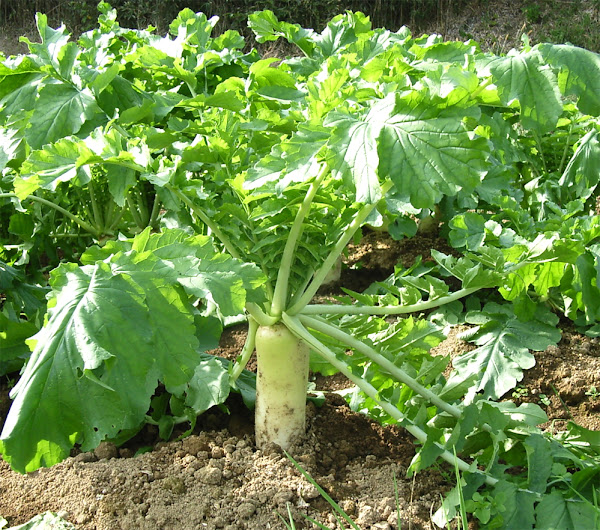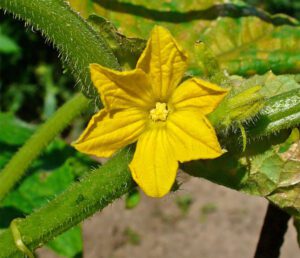Growing radishes organically in home garden is very easy and it requires relatively less time as compared to some other common home garden crops.
Radishes (Raphanus sativus) are actually among the mostly cultivated and favorite garden crops throughout the world.
Radishes are tasty, nutritious and flavorful and they are mostly eaten raw as a crunchy salad vegetable.
They are great source of vitamins, minerals and some other essential nutrients. A raw radish is 1 percent protein, 3 percent carbohydrates, 95 percent water and has negligible amount of fat.
And the most notable advantages of growing radishes in your home garden is ‘both roots and leaves of the plant are edible’.
Radishes can be grown as a companion plants in your home garden with some other plants.
They germinate quickly, grow rapidly and suffer less from pests and diseases.
So, growing radishes organically in your home garden can be a great option. And yes, it’s much pleasuring watching the plants growing faster.
Guide for Growing Radishes in Home Garden
Radishes can be planted and grown throughout the year and almost everywhere in the world.
Radishes are actually a very hardy and easy to grow vegetable and they can be planted and harvested multiple times in a growing season.
Here we are describing all about growing radishes organically in your home garden.
Choose a Variety
Choosing the right variety is very important for growing radishes. There are actually many different radish varieties available throughout the world which vary in size, color, flavor and length of time required for growing/maturing.
Radishes can be categorized into 4 main types depending on the seasons when they are grown, colors and sizes.

These 4 types of radishes are winter radishes, spring or summer radishes, round or elongated radishes and seed pod radishes.
Within these 4 types some most popular radish varieties are Butpee White, Champions, Cherry Belle, Daikon, Dragon’s Tail, French Breakfast, Misato Rose, Rat’s Tail, Red King and Watermelon.
By the way, you should choose the variety which grows well in your area. You can consult with an experienced home gardener in your area for better recommendation.
Purchase Seeds
Radish seeds should easily be available in your area. You can purchase seeds from any of your nearest seed supply stores. While purchasing, don’t forget to justify the quality of the seeds.
Best Time for Growing Radishes
Radishes can actually be grown throughout the year, except when temperatures are typically too hot.
Hot temperatures may cause the radishes to bolt, making them essentially useless. Many different varieties have developed for growing in many different seasons.
But the radishes grow very well in cool weather and best planted in spring and autumn, and you should plan for growing radishes in your home garden during this period.
Preparing the Soil
Preparing the soil perfectly is also very important for growing radishes. Radishes are mainly grown for their roots, just like growing carrots.
Their roots will grow well in loose soil. They don’t grow well in compacted soil, so till the soil and remove any rocks before planting.
If you have clay soil in your garden, then add some sand to loosen it and it will also improve drainage. Sandy, loamy or sandy-loamy soils are best for growing radishes.
Add adequate amount of organic fertilizers while preparing the soil such as well-rotted aged manure or homemade compost. It will be better if you can prepare the soil at least 1 week before planting seeds.
Planting
For growing radishes, sow the seeds directly in soil. Planting radish seeds in rows will be good.
Sow the seeds half to an inch deep and one inch apart, and the rows should be 12 inches apart. Generally the seeds will germinate within 5 days.
Caring for the Radishes
Taking additional care will result better growth of the plants. Here are the common steps for caring radishes.
Feeding/Fertilizing
If you follow the system mentioned above for preparing the soil, then you will not have to provide additional fertilizers. Although you can use organic fertilizers such as compost tea.
Watering
You need to water the radishes as they grow. Keep the soil moist, but not soaked.
Frequently watering the radishes will result quick growth (remember, your radishes will not taste good if they grow too slow). So regular watering is a must for growing radishes.
Mulching
Putting a thin layer of mulch around the radish plants will help to retain moisture in the soil during dry conditions.

Mulching will also help to prevent weeds. Grass cuttings, dry leaves and compost are good for mulching the radish plants.
Thinning
Thin the plants when they have grown about 1 inch. Doing this will give the remaining plants more space for growing (because, crowded plants generally don’t grow well).
Don’t pull the plants while thinning, cut their heads instead. Because pulling can cause damage to other plants.
Controlling Weeds
You can control most of the weeds from the radish bed by using a hoe. Mulching will also help for getting rid of the weeds.
Pests and Diseases
Pests and diseases are relatively less in radishes as compared to some other common garden vegetables (although they are not completely free from all these).
Flea beetles, slugs and snails are some common pests for the radishes. Flea beetles make tiny holes in the leaves, while slugs and snails chew the roots. Promptly harvesting the radishes can help.
Harvesting
As we have mentioned above, radishes are one of the fastest growing vegetables. They will mature quickly and become ready for harvesting within few weeks after planting seeds.
Some radish varieties become ready for harvesting as early as 3 weeks. You can start harvesting when the roots are about 1 inch in diameter.
Although you can wait until the radishes reach maturity. Actually it’s all depend on your own choice. Lift the entire plant out of the ground with your hand for harvesting.
Growing radishes in the home garden is actually a rewarding experience, especially if you follow all the steps mentioned above. And you should try growing this vegetable in your garden. Good luck!






